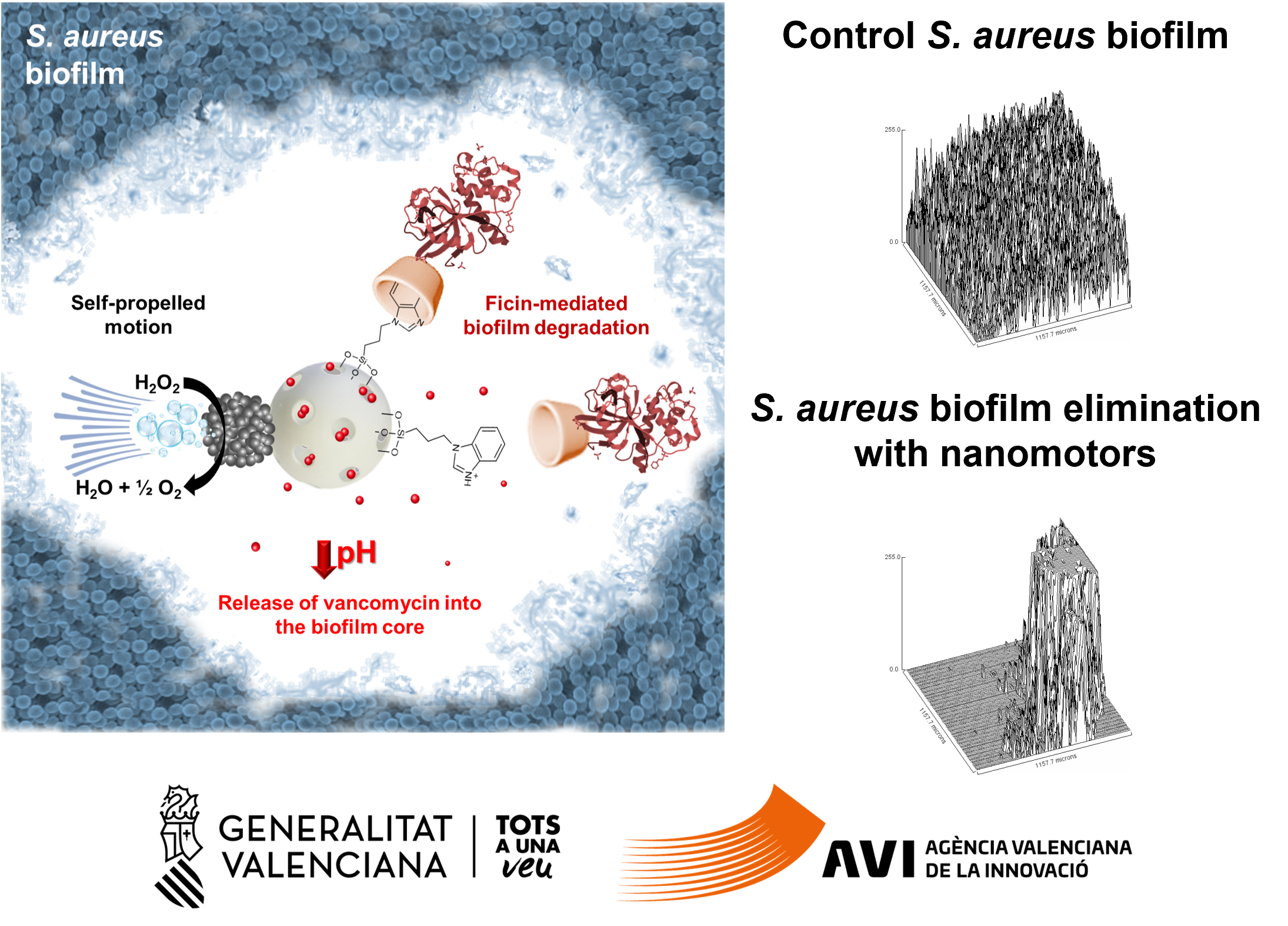
At the IDM, the Nanosens group led by Professor Ramón Martínez Máñez has developed a system for the treatment of bacterial biofilms. This work has been carried out in collaboration with the Oral Microbiome Laboratory of the FISABIO Foundation (Fundación para el Fomento de la Investigación Sanitaria y Biomédica de la Comunitat Valenciana), led by Alex Mira.
Biofilms are defined as microbial communities that grow attached to an inert surface or living tissue and are wrapped in a matrix of substances generated by the macroorganisms themselves. Due to their structure, they act as a physical barrier that hinders the penetration and diffusion of drugs, thus protecting pathogens and favoring the emergence of resistance. In this sense, the research group has developed a system that acts as a nanometric "drill" capable of penetrating the biofilms to, in a subsequent step, release the antibiotic in a localized and controlled manner causing the elimination of pathogens.
he developed system is based on a Janus-type nanoparticle, characterized by having two faces of different nature in the same device. On the one hand, it has a mesoporous silica nanoparticle that acts as a container for the antibiotic and whose surface is functionalized with a pH-sensitive "molecular gate" formed by the protease ficin. On the other hand, it employs a platinum nanoparticle as a propulsion unit that catalyzes the reduction of hydrogen peroxide into water and oxygen bubbles, providing movement to the nanodevice. In summary, the mechanism of action of the nanomotor developed for the elimination of bacterial biofilms has two stages. The first one, produces the penetration of the nanomotors and the disruption of the biofilm thanks to the movement and the ficin protease; and the second one, promotes the elimination of the bacteria through the controlled release of the antibiotic activated by the acid pH present inside the biofilm.
Excellent results have been obtained in studies for the treatment of Staphylococcus aureus biofilms, one of the most important bacteria in endodontic problems, where a decrease in biofilm and a much higher bacterial elimination than conventional treatments have been observed. Both the results and the prototype designed have been registered under patent. In addition, this work has recently been published in the journal Chemistry of Materials. Here is a link to the publication: Chem. Matter., 2023, 35(11), 4412-4426. https://pubs.acs.org/doi/10.1021/acs.chemmater.3c00587?fig=abs1&ref=pdf
In recent years, thanks to the Scientific Unit for Business Innovation of the IDM (UCIE-IDM) funded by the Agència Valenciana de la Innovació (AVI) have been conducting in vitro and in vivo tests to market the medical device to treat endodontics as a substitute for irrigants that are used today as sodium hypochlorite or chlorhexidine.









